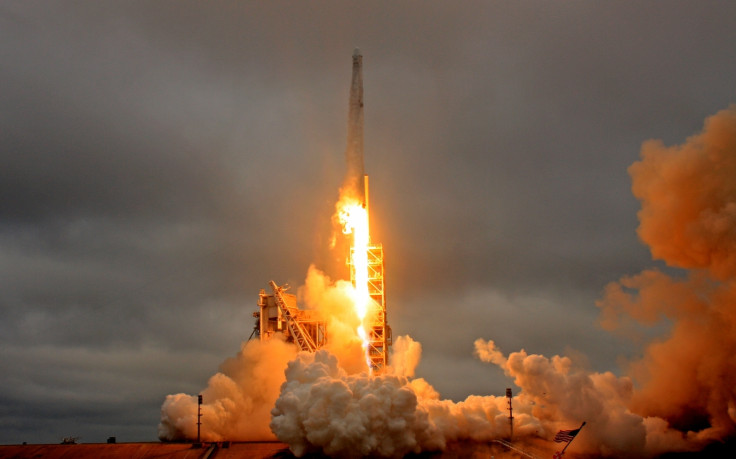SpaceX successfully tests first stage cores of Falcon Heavy rocket
The company posted a video showing off a fiery static test of one of the cores.

SpaceX has announced that it has successfully tested all three first stage cores of its Falcon Heavy rocket – the launch vehicle which is slated to send humans to the moon sometime in 2018.
The private spacefaring company has been working on Heavy since a long time. Musk unveiled it in 2011 with launch plans for 2013, but now, after a series of delays and tests at SpaceX's Texas facility, it finally seems the rocket would make the promised lift-off in November. The completion of these tests is a clear sign that the space giant is moving quickly in the final leg of prepping Heavy for its first-ever launch.
SpaceX made the announcement on Twitter and posted a video showing off a static test of one of the cores. The cycle of these tests began in May with the test of Heavy's main core.
Falcon Heavy’s 3 first stage cores have all completed testing at our rocket development facility in McGregor, TX → https://t.co/GJu23QdZRK pic.twitter.com/ivVXPhWu0u
— SpaceX (@SpaceX) September 2, 2017
Falcon Heavy is being prepped for SpaceX's ambitious space-faring missions to Moon and Mars. It will be the largest rocket ever from the company with three Falcon 9 boosters combined together. An individual Falcon 9 currently boasts nine Merlin engines and a payload capacity of 2270kg.
Meaning, the Heavy system, if it launches on time, will be world's most powerful rocket with a combined thrust from 3 boosters (27 Merlin engines). This will allow SpaceX to launch as much as 6350kg of cargo into low Earth orbit.
The launch is a couple of months away, but SpaceX founder Elon Musk has already expressed scepticism towards a successful lift-off. "There's, like, a lot that can go wrong there," Musk said at the ISS R&D Conference earlier this summer. "It's guaranteed to be exciting," the billionaire said, but cautioned, there's a "real good chance that that vehicle does not make it to orbit."
© Copyright IBTimes 2025. All rights reserved.





















